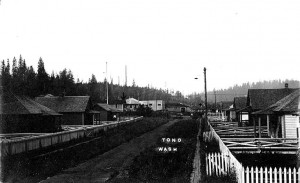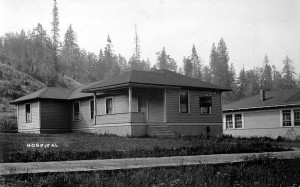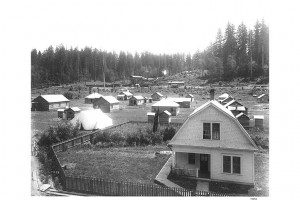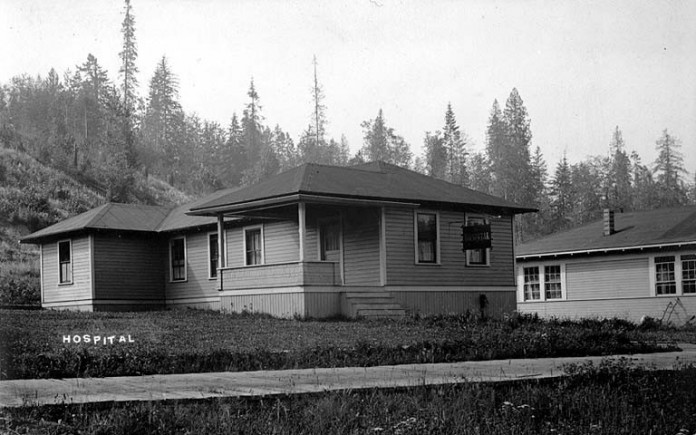By Emmett O’Connell
 Tono isn’t just one of the most notable ghost towns in the South Sound, it is a ghost landscape. Not only are there no buildings left of the sizeable former coal town south of Tenino, the entire valley and hills on which the town sat have been scraped away.
Tono isn’t just one of the most notable ghost towns in the South Sound, it is a ghost landscape. Not only are there no buildings left of the sizeable former coal town south of Tenino, the entire valley and hills on which the town sat have been scraped away.
Transalta, the operators of the coal steam plant and former coal mine, currently own the former townsite.
Coal was discovered near Tono as early as 1855, and by 1870s, there were already coal mines in the area. The coal fields on which Tono sat are the largest in Washington State.

Tono was founded in 1907 by the Union Pacific Railroad’s local coal subsidiary, the Washington Union Coal Company. The Union Pacific used the Tono mines to directly supply their regional rail lines with fuel. The community was probably originally referred to as Hurn, in reference to a nearby post office that had been established seven years earlier. But, the community was renamed to Tono in 1909.
There are at least two versions of how Tono got its unique name. The first is that it was named by a Japanese railroad worker, after the Japanese city of Tono. Apparently a lot of Japanese citizens were hired to build railroads during that era. Another version is that Tono is simply a shortening of the phrase “tons of coal.”
By 1911, the population of the town had sprung to 800 and the town owners were on their way to building 500 new houses and a school. Eventually, by the town’s peak in the 1920s, the town would have its own store, hotel and hospital.

Like many other coal towns in western Washington, Tono residents and workers showed a particular interest in town sports, especially soccer. While larger coals towns like New Castle and Carbonado participated in Seattle centric leagues, Tono played (and was at least once champion) of the Southwest Washington Soccer League.
In 1932, as the Union Pacific was shifting from coal to diesel engines, the rail line sold the mines and the town to the Bucoda Mining Company. By the 1950s, most of the old town had disappeared and the mines closed down. Some of the old buildings were moved into neighboring towns. Only one couple, residing in the old superintendent’s house, stayed on the site through the 1970s.
In 1969 coal mining in the fields around to the Tono site was revived when the Pacific Power and Light company bought the land and built a new steam plant to produce power. It was during this era that the Tono site saw its largest change. The ground on which the town had sat was scraped up, in order to get to the coal beneath it. The coal mining terraforming was so severe that the town site is currently dominated by two massive ponds.

The Pacific Power and Light mining and steam plant operation changed hands over the years and eventually was sold to Transalta, a Canadian energy company. They decided in 2006 to close down the mines, but continue to operate the steam plant.
References and further reading:
Centralia Chronicle: Tono Growing Rapidly in 1911
Wikipedia: Centralia Coal Mine
UW Digital Collection: Tono WA
Centralia Steam Electric Project, a story of resource development





















































